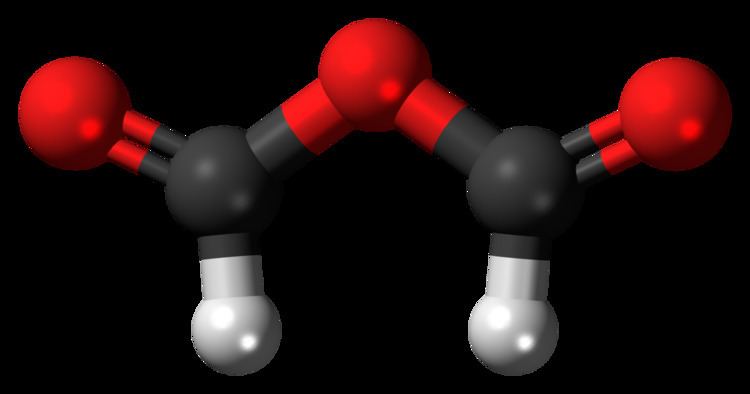Appearance Colorless gas | ||
 | ||
Formic anhydride, also called methanoic anhydride, is an organic compound with the chemical formula C
2H
2O
3 and a structural formula of (H(C=O)−)2O. It can be viewed as the anhydride of formic acid (HCOOH).
Contents
Preparation
Formic anhydride can be obtained by reaction of formyl fluoride with sodium formate in ether at −78 °C. It can also be produced by reacting formic acid with N,N′-dicyclohexylcarbodiimide ((C
6H
11−N=)2C) in ether at −10 °C. It can also be obtained by disproportionation of acetic formic anhydride.
Properties
Formic anhydride is a liquid with boiling point 24 °C at 20 mmHg. It is stable in diethyl ether solution. It can be isolated by low-temperature, low-pressure distillation, but decomposes on heating above room temperature. It decomposes into formic acid and carbon monoxide.
The decomposition of formic anhydride may be catalyzed by formic acid.
Formic anhydride can be detected in the gas-phase reaction of ozone with ethylene. The molecule is planar in the gas phase.
